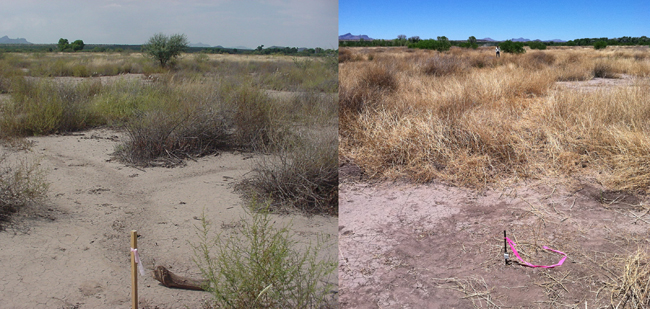The largest impact of humans on deserts is grazing. In western North America, cattle have been present continuously since the 1700’s. Along the Mexican-U.S. border two large tracts of land were removed from grazing in the late 1970’s. The San Bernardino National Wildlife Refuge (www.fws.gov/southwest/refuges/arizona/sanbernardino.html) was established in 1979 because it contains the headwaters of the Rio Yaqui, the largest river in Sonora, Mexico. A number of fish species and a spring snail occur in the U.S. only in this refuge. Directly south, in Mexico, Rancho San Bernardino has not been grazed since 2000 (www.cuencalosojos.org/). We are re-measuring sites first established in 2000 with the vegetation found there today. The data are repeat photography and documentation of species composition and cover. The picture below is one site in an abandoned agricultural field. Major differences are the modest increase in mesquite trees. The mesquite tree in the middle of the picture in 2000 died (probably due to winter freezing). Photos such as these will be compared in sites in riparian, desert marsh, desert scrub, mesquite forest and grassland habitats.
The fire in the Chiricahua Mountains has crossed to the western side of the mountain last Sunday or Monday (22, 23 May). It is now larger than 40,000 acres and will probably burn until the rains begin in early July (www.inciweb.org/incident/2225/).


